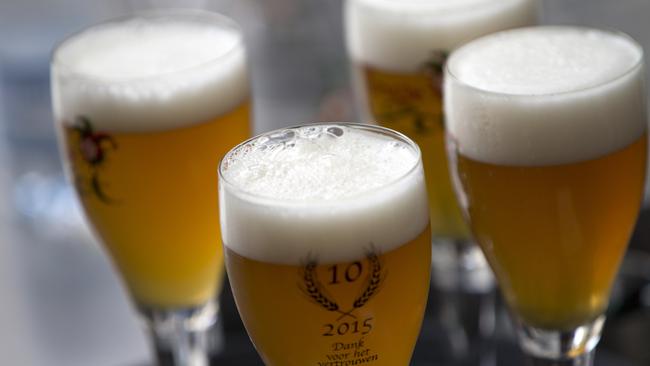Coronavirus: Aussies staying in, drinking booze and buying cushions
CBA data shows changing spending habits as we settle into our homes during the pandemic.

Australians are spending more on household furniture and take away booze as a result of stay at home restrictions implemented throughout the coronavirus pandemic.
Credit and debit card data released by Commonwealth Bank is highlighting a growing trend of Australian shoppers spending more money at the bottle-o and on household furnishings, compared to essential good categories.
In the week ending May 8, expenditure within CBA’s household furnishings and equipment division has jumped by 53 per cent compared to the same corresponding week in 2019.
Alcohol purchased at bottle shops increased by 47 per cent, while its counterpart, alcohol sales within venues decreased by 66 per cent over the same period.
Food spending at grocery stores and supermarkets over the period rose 26 per cent, a cool off compared to the week ending March 27 which reported a spending spike of 40 per cent.
CBA senior economist Belinda Allen noted the increase within furnishings is partly a result of bottled-up demand, which is likely due to the 18-month fall within the housing market, pre COVID-19.
“Generally household furnishings and equipment is highly correlated to turnover in the housing market, so people buy a new lounge or a new fridge when they move house,” Ms Allen said.
“But given housing turnover has been really low for a couple of years now, maybe we are just seeing that pent-up demand coming through and feeling it more because we are at home.”
Ms Allen also noted the pick-up in takeaway liquor spending is a result of the complete shutdown within the hospitality sector, preventing people from visiting a licenced venue.
Overall alcohol spending over the period rose 4 per cent compared to this time last year.
Consumption across the economy is starting to show improvement, with all inclusive spending down 2 per cent compared to the same week in 2019.
“We do expect to see more spending shifts as some restrictions are being lifted in each state” Ms Allen said.
“There are differences as to what is allowed in each state and we would expect to see this represented in this data.”
According to CBA, spending in smaller states is picking up at a faster rate compared to New South Wales and Victoria.
The bank flagged early roll back of business shutdowns in Queensland, Northern Territory and South Australia is assisting in the positive turnaround.
“The smaller states have had a shallower downturn in their spending data and have now recovered into positive territory compared to bigger states,” Ms Allen said.






